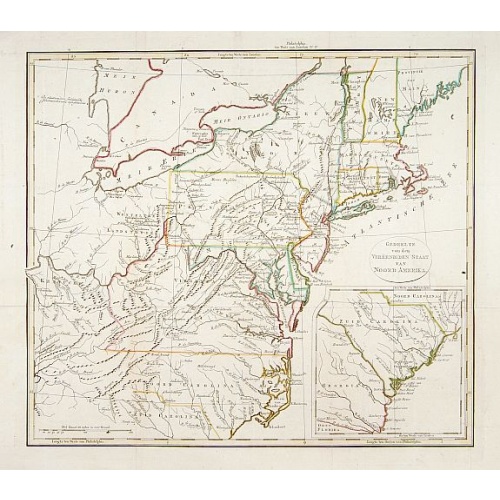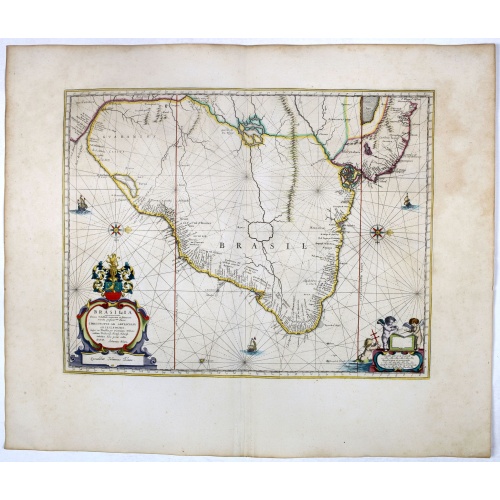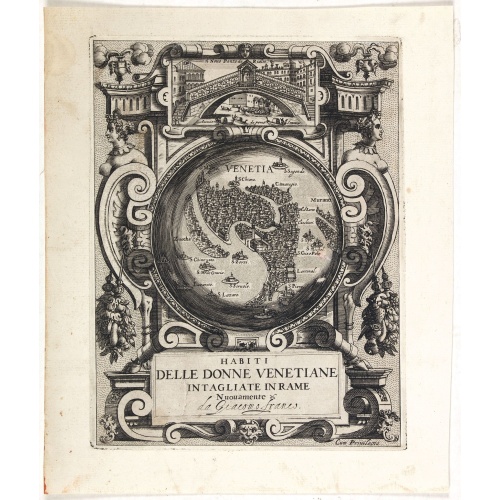Habiti delle Donne Venetiane . . .
BuyNow for €950
- Maker :
- FRANCO, G.
- Place :
- Venice
- Date :
- ca. 1591
- Color :
- Uncolored.
- Height mm.:
- 225
- Width mm.:
- 170
- Condition :
- Cut on neat lined. Remargined. Good and dark impression. In good condition
- Bibliography :
- -
- Seller's ref. :
- 44514
This item is offered by Librairie_Loeb-Larocque
See other Items from this seller- Postage
-
France
€15 to France
- Select Country
- Zip/Post Code
- Quantity
Description
Title page of the book Habiti delle Donne Venetiane" (Dress of Venetian Women) which consists of twenty numbered plates of ornately dressed women. This very decorative title page shows in to Rialto Bridge and in the center a bird's-eye plan of Venice.Giacomo Franco (1556-1620) was born and grew in Venice, where he used to work. He was the son of painter Giovanni-Battista Franco (1510-1561), with whom he began his artistic training at the age of eleven. He worked as a painter, engraver, woodcutter, and dealer in graphics and books.
For a while he studied in Bologna with Agostino Carracci (1557-1602) who, with his brother Annibale (1560-1609) and his cousin Lodovico (1555-1619), were prominent figures at the end of the sixteenth century in the movement against artificial mannerism in Italian painting.
In the early 1580s they opened a private teaching academy that soon became a center for progressive art. In their teaching they laid special emphasis on drawing from life, and clear draughtsmanship became a quality particularly associated with their school. Possibly as a result of his study with Agostino Carracci, Franco published a collection of his own “facsimile font” figure studies in 1596, in which one or two human figures are positioned to form each of the letters of the alphabet.
In 1595 he took over his father’s workshop and eventually became a well-known publisher. Although he was not documented as belonging to the booksellers’ or printers’ guilds, he is recorded in 1606 and again in 1619 as belonging to the painters’ guild. Franco’s determination to be recognized as an artist is reflected in his will, in which he refers to himself as a “designer.”
Amérique Septentrionale.
Maker : MONIN, C.V.
Place : Paris
Date : 1845
Gedeelte van den Vereenigden Staat van Noord Amerika.
Maker : ANONYMOUS
Place : Netherlands c. 1820
Date : 1820
Carte de la Guyane Françoise et l'Isle de Cayenne..
Maker : BELLIN, J. N.
Place : Paris
Date : 1763
Brasilia.
Maker : BLAEU, J.
Place : Amsterdam, 1647
Date : 1647
Postage & Shipping
-
Item Location
Terms and conditions - Item Location
- 75013, Ile-de-France, France
- Ships To
- United States, United Kingdom, Albania, Argentina, Armenia, Australia, Austria, Bahamas, Belgium, Bermuda, Bosnia and Herzegowina, Brazil, Bulgaria, Canada, Chile, China, Costa Rica, Denmark, Dominica, Egypt, El Salvador, Finland, France, Germany, Greece, Guatemala, Hong Kong, Hungary, Iceland, India, Italy, Japan, Korea (South), Kuwait, Liechtenstein, Lithuania, Luxembourg, Madagascar, Mexico, Monaco, Morocco, Netherlands, Netherlands Antilles, New Zealand, Norway, Paraguay, Peru, Philippines, Poland, Portugal, Qatar, Reunion, Romania, San Marino, Saudi Arabia, Seychelles, Singapore, Slovenia, South Africa, Spain, Sri Lanka, Suriname, Sweden, Switzerland, Taiwan, Thailand, Tunisia, Turkey, United Arab Emirates, Uruguay, Vietnam
- Pick-ups
- Buyer can pick-up
- Shipping Instructions
- Lorem ipsum dolor sit amet, consectetur adipisicing elit.
This item is owned and offered by the seller Librairie_Loeb-Larocque - All items are available for immediate sale, offered subject to prior sale.
Invoices are created by the seller by using our shopping cart or be prepared by the seller the day following the order and are emailed to you.
Items offeres by different sellers are invoiced separately.
Shipping fees are extra. The buyer is responsible for all applicable taxes, including any VAT, customs clearance, import duties, or equivalent costs arriving at the customer's home border. Payment is due on receipt of the invoice. The item(s) are shipped as soon as possible after receipt of your payment.
Before buying please read the complete Terms Conditions of Sale.
- Payment Methods
- Visa, Mastercard, Bank Transfer, American Express, iDEAL, PayPal, Google Pay
- Returns Accepted
- Yes
- Returns Policy
- Please contact us for instructions before returning items.
Post Message
Feel free to ask the seller a question. Please note that the seller could be located in an area with a different time zone. Our seller will do their best to respond within 24 hours.Post your message below.






